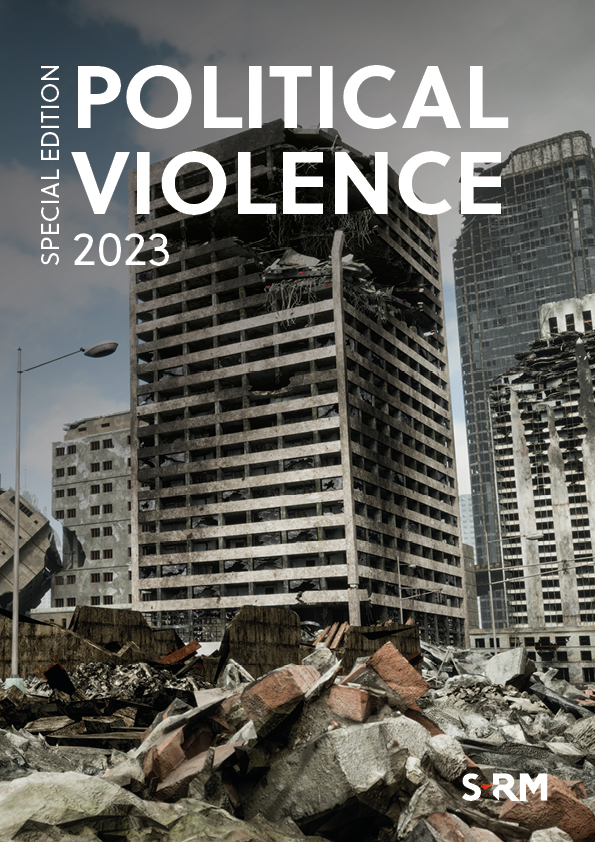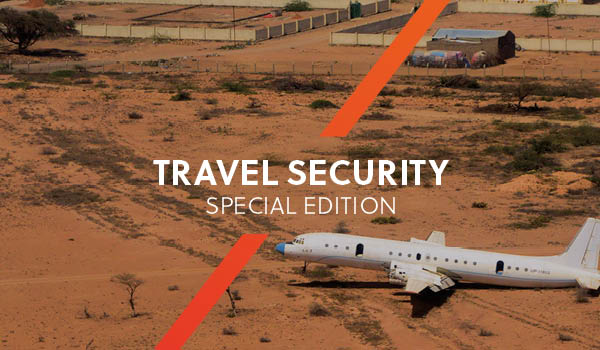In 2022, countries faced geopolitical changes that have had disastrous consequences domestically, leading to economic crises, political turbulence, and social instability. Erin Drake writes that a combination of existing and emerging challenges will continue to drive unrest in 2023 as governments face a rapidly evolving threat landscape.
While some countries have fared better at offsetting the socio-economic implications stemming from the Covid-19 pandemic and the Russia-Ukraine war, others have struggled to adapt to new economic realities while fending off domestic pressures like soaring living costs that have driven public discontent and unrest. Looking ahead, the broader macroeconomic climate and rapidly changing geopolitical landscape can present a tipping point in countries already beset by issues like political instability, debt crises and climate-related events like drought. As governments and commercial operators walk this tightrope, uncertainty and unrest will remain characterising features of the operating environment.
WHAT DOES THE DATA SAY?
Global unrest declined slightly between 2021 and 2022, potentially due to a combination of factors like a decline in anti-vaccine unrest, a return to mostly normal commercial activity and an associated drop in lockdown-related frustrations. While a similar decline is reflected across almost all regions, there are nevertheless some variations in driving factors as well as an often uneven distribution of unrest hotspots. For example, while Asia Pacific had the highest number of demonstrations, protests were concentrated in a handful of countries, with India accounting for the vast majority (nearly 15,000) protests, while Pakistan (6,229) and South Korea (5,212) saw the second and third largest number of incidents, and other countries in the region each recorded under 3,000 protests. The Asia Pacific region was and will continue to be at the highest risk of unrest in 2023 due to governments’ struggles with responding to an unstable global macroeconomic environment, while Europe is set to follow, driven by concerns over energy challenges and inflation. France accounted for the largest concentration of protests in Europe (20 percent), while Iran (21 percent) and Turkey (20 percent) competed for top spot in the Middle East. It is worth noting that in some locations, including parts of Africa, Asia and the Middle East, protest numbers are probably far lower than the actual number of incidents due to a lack of consistent reporting and other difficulties in data collection.
Global Unrest in 2022
COUNTRIES WITH THE HIGHEST NUMBER OF PROTESTS PER REGION IN 2022
India
Asia Pacific |
France
Europe |
|
|
US
North America |
|
Russia
Russia & CIS |
Number of protests by region 2020-2022

WHAT TO EXPECT IN 2023
In the coming year, there are four overarching issues that will drive unrest. These metrics are not wholly indicative of a country’s vulnerability to protests, and authoritarian-style regimes may mitigate demonstrations through crackdowns and a generally repressive environment. However, in many cases – particularly where present simultaneously – these factors will create an environment more susceptible to unrest.
1 Growing food insecurity concerns
Food insecurity has escalated since 2018 and will increasingly drive unrest in 2023. In a global food crisis worsened by supply-chain bottlenecks and inflationary pressures, demonstrations over rising food costs have proliferated. Climate-linked events like droughts and rising temperatures have exacerbated food insecurity, particularly in developing economies where populations rely heavily on climate-sensitive activities like agriculture. In the Maghreb, insufficient rainfall has contributed to economic struggles stemming from the pandemic and Russia-Ukraine war; Algeria’s high food costs and shortages of staple goods like cooking oil prompted clashes in supermarkets in 2022, while the Tunisian agricultural sector’s use of 80 percent of the country’s water sparked road blockades in communities suffering water cuts. Meanwhile, Morocco’s drought-beset agriculture sector – accounting for 21 percent of GDP and 39 percent of employment – will hamper economic growth and encourage further unrest in 2023. The Horn of Africa has also seen droughts reduce harvests by around 70 percent compared to average yields. As supply chain disruptions and inflation sustain higher food costs in the coming 12 months, unrest will continue, especially in major wheat, fertiliser, and oil-importing countries.
In the longer term, these dynamics could drive wider geopolitical shifts; food security challenges compounded by climate change could drive mass-migration and associated instability as host governments’ resources are strained. With food costs rising globally, countries with the highest levels of food insecurity, like in East Africa (where food stockpiles will hardly feed populations for two months), also face a heightened threat of conflict as competition for resources intensifies.
Number of Global food-related protests 2018-2022

2 MACROECONOMIC TURBULENCE
As governments struggle to offset high living costs in the volatile macroeconomic environment, countries with limited budgetary capabilities to weather additional shocks carry an elevated risk of unrest. In Latin America, rising fuel and food prices have driven demonstrations against potential international loans which could require austerity measures, while large fiscal deficits in Asian countries like Sri Lanka, Pakistan, and Myanmar challenge administrations’ ability to manage inflationary pressures. Fuel prices regularly stoke violent unrest in Africa as large transport sectors face reductions in government support due to tighter fiscal policies. Meanwhile, Europe faces energy insecurity and rationing, which has prompted outrage across energy-intensive industries like farming and manufacturing, while some countries in the Middle East, like Jordan, Iran and Turkey, face unrest and political instability over cuts to bread subsidies and rolling power outages.
UNREST SPOTLIGHT ARGENTINAArgentina’s political and economic instability is set to continue and potentially escalate into 2023. The Central Bank’s foreign currency reserves are largely depleted amid near-triple-digit inflation and poverty levels approaching 40 percent. The centre-left Peronist administration faces political infighting, low popularity and public anger that has driven persistent, widespread unrest by civil society and Argentina’s powerful unions. President Alberto Fernandez has struggled to negotiate restructuring the country’s debt with the IMF for access to much needed aid – a measure widely rejected by the population for its conditionalities which include significant spending cuts. Facing domestic opposition and a dire economic situation, Fernandez’s weak and ad hoc inflation policies are unlikely to drive down unrest ahead of elections. Meanwhile, indications that two controversial heavyweights – former presidents Cristina de Kirchner and Mauricio Macri – may run for office again threatens to further polarise the electorate and deepen instability. |
Cost of living unrest around the world in 2022

3 THE (DIS)INFORMATION MEGAPHONE
Since the Arab Spring, social media has played an increasing role in activism. From Chile’s 2019 anti-government demonstrations to the 2022 Kenyan and Brazilian elections and global anti-vaccine protests, social media has provided a way to coordinate demonstrations and encourage engagement with prominent issues. In Iran’s censored media environment, social media helped connect demonstrators and incentivise mobilisation over government repression, with protests occurring across 100 cities in late-2022. However, the darker side of disinformation has seen state-sponsored groups and governments attempt to sway public opinion or discredit opposition; in Sri Lanka, state-sponsored disinformation following former president Gotabaya Rajapaksa’s resignation aimed to delegitimise protesters, portraying them as misguided youth. Russia has also waged long-term disinformation wars in Sudan, Libya as well as Mali – in which unrest and anti-French sentiment fuelled by Russian-led disinformation was cited as a condition that drove out French counter-terrorism troops in November 2022. Social media also amplifies conspiracy theories around issues like the pandemic and election credibility; far-right conspiracies around vaccine safety sustained momentum on commercially disruptive anti-vaccine trucker convoys in several countries like the US, Canada and France in 2022.
With social media remaining largely unregulated despite some state-level efforts at cracking down on anti-democratic or violence-inciting content, disinformation narratives will continue to polarise public opinion and encourage further unrest. Ongoing geopolitical tensions, particularly between Russia, China, and the West, will likely intensify the use of state-driven disinformation tactics to undermine rival governments, and populations with lower levels of digital information literacy may be more susceptible to the spread of such disinformation and associated unrest.
UNREST SPOTLIGHT BrazilPresident Jair Bolsonaro’s tenure and the lead-up to Brazil’s October 2022 elections was mired in social media disinformation scandals as the president and his allies targeted opposition and spread false information around the credibility of Brazil’s electronic voting system. This led the Supreme Court to eventually ban the Telegram messaging application after right-wing disinformation campaigns proliferated. Protests by Bolsonaro’s supporters have continued following his election defeat, and Bolsonaro’s subsequent call to annul voting results in certain areas – coupled with allies and supporters’ flurry of social media posts rejecting the results - holds the potential to trigger an escalation in unrest as the new president is inaugurated in January 2023. |
4 ELECTION FEVER
Issues like disinformation and poor socio-economic conditions will come into sharper focus in countries heading into election cycles, as incumbent administrations and opposition factions attempt to persuade constituents of their ability (or their opponent’s inability) to manage these grievances. Heightened tensions during elections – particularly those with a narrow or contested outcome – was evident throughout 2022. During Kenya’s October election, for example, civil society groups formed the Njaa (‘Hunger’) Revolution movement to denounce perceived inaction by political elites as rival factions vied for the presidential seat, ignoring rising unemployment and living costs. In France, riots over economic mismanagement and high living costs flared amid the April elections. Election-related unrest is especially likely in countries already experiencing political and economic instability, like Pakistan and Bangladesh scheduled for general elections in October and December 2023.

Election Spotlight TurkeyPresident Recep Tayyip Erdoğan’s 20-year tenure faces challenges in the upcoming mid-2023 presidential and parliamentary elections; not only have six opposition parties united to face off against Erdoğan, but rifts within his ruling Justice and Development Party (AKP), rising inflation, and climbing unemployment have led to a drop in approval ratings for the president and his party. Erdoğan has already sought to counter this through crackdowns on political opposition and journalism, while the AKP’s considerable access to state and private resources will further bolster his ability to fund campaigns and attract support. In the current political and economic climate, the potential for political violence, unrest, and instability is high; should Erdoğan lose the election, the president will likely mobilise his followers to challenge the results. If Erdoğan wins, opposition protests could escalate amid concerns over prospects for economic recovery. In August 2022, an election poll indicated that Erdoğan and the AKP had fallen behind opposition candidates, suggesting the potential for a disputed outcome. Already, protests have increased since the 2018 election as the government faces a debt and currency crisis which has hindered its ability to continue funding social support measures. These grievances remain prevalent and will likely be a focal point in upcoming election campaigns, particularly as Turkey’s opposition seeks leverage to combat Erdoğan’s influence. |











 Email Erin
Email Erin





 @SRMInform
@SRMInform
 S-RM
S-RM
 hello@s-rminform.com
hello@s-rminform.com

